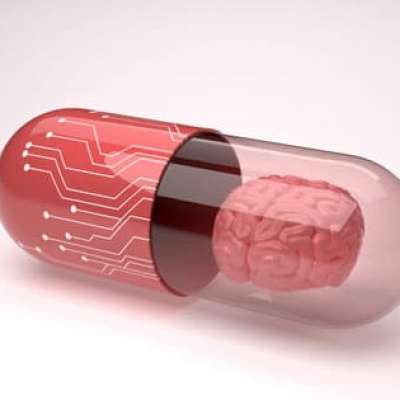" STAINLESS STEEL ... THE MIRACLE METAL " 1960s REPUBLIC STEEL PROMO FILM HISTORY OF STEEL 95994
Love our channel? Help us save and post more orphaned films! Support us on Patreon: https://www.patreon.com/PeriscopeFilm Even a really tiny contribution can make a difference.
Subscribe and consider becoming a channel member https://youtu.be/ODBW3pVahUE
Made by Republic Steel, this color film is one of a series called "Stainless Steel...The Miracle Metal". This particular film features Dr. Carl Zapffe presenting a lecture on the history and development of stainless. It dates to 1960. Stainless steel is a group of ferrous alloys that contain a minimum of approximately 11% chromium, a composition that prevents the iron from rusting and also provides heat-resistant properties.
Opening: Republic Steel presents Stainless Steel, the Miracle Metal. Part 1: Historical Development (:06-:42). Dr. Carl Zapffe, a metallurgist (and also an internationally known physicist, engineer and chemist), looks through a microscope. He then starts to explain the film's focus. He holds a piece of stainless steel. he holds rusted iron. He picks up a piece of iron ore. He shows a picture of the piece inside a dead bison and a viking boat along with tin being used on an old table. A restored Viking boat at a museum in Oslo has original nails in it going back many thousands of years. Steel and carbon inside the nail is shown in detail (:43-6:27). A Damascus blade, the Damascus steel make-up is explained. Dr. Zapffe explains how we'll go back in time to discuss metal. He holds a meteorite in his hand which was found in Normandy. Going back to the pictures, the sectioned meteorite is shown. The 18-8 is explained. The numbers 18/8 refer to the percentages of chromium and nickel in the stainless steel alloy. The "18" refers to the chromium content, which gives flatware its rust-resistance properties, and the "8" refers to the nickel content, which gives it its silver-like shine and some rust-resistance (6:28-11:28). In 1797, a chemist in Paris is working on a new mineral, in 1798, the man shows off chromium. The father of chromium is Louis-Nicholas Vauquelin. He hammers chromium with a hammer and is splits (11:29-15:00). The doctor talks about how stainless steel needs certain minerals and explains what is required (15:01-16:50). A stainless steel piece under a microscope without the proper makeup. Another piece from under a microscope is shown and again the makeup isn't correct. Berthier's experiments are shown on a chart, it is explained how carbon kept causing him a problem (16:51-19:35). Dr. Zapffe stands in front of sulfuric acid, water, nitric acid, citric acid, acetic acid, hydro-chloric acid. Steel is placed in each one of these solutions, the Dr. pulls the piece out of each and explains (19:36-20:50). He moves back to a chart and explains how the percentages were off with trying to attain stainless steel. Goldschmidt's crucible experiments are explained in a diagram (20:51-23:16). Dr. Zapffe shows a map and explains where chemists who had pure chromium experimented, England, Germany, and the USA. He goes into great detail while standing in front of the map (23:17-26:25). Back at another board, the Dr. points out Carbon, Chromium, Iron, and Nickel. He explains other facts about these metals (26:26-28:49). Dr. Zapffe continues to summarize what the important chemists discovered (28:50-29:23). End credits (29:24-29:33).
Republic Steel was founded as the Republic Iron and Steel Company in Youngstown, Ohio in 1899, and rose to become the nation's third largest producer. The company still exists as a subsidiary of Grupo Simec and produces Special Bar Quality (SBQ) steel bars.
We encourage viewers to add comments and, especially, to provide additional information about our videos by adding a comment! See something interesting? Tell people what it is and what they can see by writing something for example: "01:00:12:00 -- President Roosevelt is seen meeting with Winston Churchill at the Quebec Conference."
This film is part of the Periscope Film LLC archive, one of the largest historic military, transportation, and aviation stock footage collections in the USA. Entirely film backed, this material is available for licensing in 24p HD, 2k and 4k. For more information visit http://www.PeriscopeFilm.com
0



 Sant77
Sant77
 Life_N_Times_of_Shane_T_Hanson
Life_N_Times_of_Shane_T_Hanson
 mrghoster
mrghoster
 MikePompeoFanboy
MikePompeoFanboy

 KEEPER
KEEPER

 RT
RT
 LiberumArbitrium
LiberumArbitrium




 Styxhexenhammer666
Styxhexenhammer666



 say Never_Again
say Never_Again![40K - THE SIEGE OF VRAKS [2] DEATH KORPS BREAKTHROUGH Warhammer 40,000 Lore - History](https://cdn.mgtow.tv/upload/photos/2025/12/19y6yw1pvUaaQJcMJnJ5_10_4d14daa7b5f2e76e403cebc7c2194b87_image_thumb_high.jpg)
 NerokeFive
NerokeFive

Log in to comment
Why did I post and pin this infromation?
Well despite IRON ALLOYS (steel / cast irons / stainless steel) being pretty much everywhere, commercially pure iron is for all intents and purposes, I have only ever come across ONE piece of it, and being about a fat fingers thickness and a meter long - I am the only person I have ever met, who have bent a rod of it in my own bare hands, because it's sort of almost as soft as lead.
This was rather "far out" and "mind blowing" because this new experience, recalibrated everything I had known about iron and iron alloys - up to that point.
And the following references are about the only references to pure or commercially pure iron being softer than pure aluminium, and that it can with some effort, be cut with a pocket knife.
If you ever are in a iron sellers place, ask them if they have any rods of commercially pure iron, and then buy a meter and experiment with it.
It's just like watching the very old superman TV series, in black and white, where superman spreads the bars of a prison with his bare hands....
https://www.youtube.com/watch?v=RmTea2Vr28Y
Very surreal - when your the one bending the iron bar by hand...
https://en.wikipedia.org/wiki/Iron
The properties of pure iron are often used to calibrate measurements or to compare tests.[119][121] However, the mechanical properties of iron are significantly affected by the sample's purity: pure, single crystals of iron are actually softer than aluminium,[118] and the purest industrially produced iron (99.99%) has a hardness of 20–30 Brinell.[122] The pure iron (99.9%~99.999%), especially called electrolytic iron, is industrially produced by electrolytic refining.
https://www.ispatguru.com/pure-iron/
Pure Iron
satyendra February 10, 2016 0 Comments alpha iron, austenite, delta iron, Ferrite, gamma iron, Pure iron, steel, wrought iron
Pure Iron
Iron is a chemical element with symbol Fe (from Latin word Ferrum). Its atomic number is 26 and atomic mass is 55.85. It has a melting point of 1538 deg C and boiling point of 2862 deg C. It is a metal in the first transition series. It is by mass the most common element on the earth, forming much of earth’s outer and inner core. It is the fourth most common element and the second most common metal in the earth crust. Steels contain over 95 % Fe.
Pure iron is a common metal but it is mostly confused with other metals such as steel and wrought iron. All these metals vary in composition. The carbon content of pure iron makes it unique and different from the other metals and ferrous alloys. The carbon content in pure iron is always less than 0.008 %. Wrought iron has a higher carbon content of up to 0.5 %. This shows how less the impurities are in the pure iron.
Pure iron is silvery white colored metal and is extremely lustrous. Its most important property is that it is very soft. It is easy to work and shape and it is just soft enough to cut through (with quite a bit of difficulty) using a knife. Pure iron can be hammered into sheets and drawn into wires. It conducts heat and electricity and is very easy to magnetize. Its other properties include easy corrosion in the presence of moist air and high temperatures.
Pure iron has got valencies +2 and +3. Compounds of iron with valency +2 are known as ferrous compounds while the compounds of iron with valency +3 are known as ferric compounds.
Metallurgy of pure iron
The metallurgical nature of solid pure iron can be studied from the experiment as described here. A bar of pure iron (e.g., 25 mm in diameter) is sectioned to form a thin disk in the shape of a quarter. A face of the disk is now polished on polishing wheels, starting first with a coarse grit polish and proceeding in steps with ever finer grits until the face has the appearance of a shiny mirror. The shiny disk is now immersed for around 20 to 30 seconds in a mixture of 2 % to 5 % nitric acid (HNO3) with methyl alcohol, a mixture often called nital (‘nit’ for the acid and ‘al’ for the alcohol). This process of etching causes the shiny surface to become a dull color. If the sample is now viewed in an optical microscope at a magnification of 100 ×, it is found to have the appearance as shown in Fig 1.
The individual regions, such as those numbered 1 to 5, are called iron grains, and the boundaries between them, such as that between grains 4 and 5 highlighted with an arrow, are called grain boundaries. The average size of the grains is quite small. In the figure at the 100× magnification, a length of 200 microns (1 micron is 0.001 mm and is also known as micrometer) is shown by the arrow so labeled. The average grain diameter for this sample has been measured to be 125 microns. Although a small number, this grain size is much larger than the grain size of most commercial irons. For a comparison, the thickness of aluminum foil and the diameter of a hair are both approximately 50 microns.
Microstructure of pure iron
Fig 1 Microstructure of pure iron showing grains, grain boundary and crystal structure
In pure iron the basic building blocks are the individual atoms of iron (Fe) atoms. The grains shown in Fig 1 are called crystals and they are made up of atoms, all of the atoms are uniformly arranged in layers. As shown in Fig 1, if lines are drawn connecting the centres of the atoms, a three-dimensional array of little cubes stacked together to fill space is generated. In iron at room temperature, the cubes have an atom at each of the eight corners and one atom right in the middle of the cube. This crystal structure is called a body-centered cubic (bcc) structure, and the geometric arrangement of atoms is often called a bcc lattice. In the Fig 1, the crystal lattice can be envisioned as three sets of intersecting planes of atoms, with each plane set parallel to one face of the cube.
Iron with a bcc structure is called ferrite. Another name for ferrite is alpha iron. The nature of a grain boundary is shown in Fig 1. The boundary is a planar interface, generally curved, along which two grains of different orientation intersect. The ‘A’ planes in grain 4 make a much steeper angle with the horizontal than do the ‘A’ planes of grain 3. If grain 4 is rotated clockwise to cause its ‘A’ planes to line up with the ‘A’ planes of grain 3, then the grain boundary gets removed and the two grains become one larger grain.
Upon heating pure Iron experiences two changes in crystal structure. The first change occurs when the iron is heated to 912 deg C. At this temperature the crystal structure changes spontaneously from bcc to a new structure called face-centered cubic (fcc). This structure is also shown in Fig 1, where it is seen that the atoms lie on the corners of a cube as well as one atom at each of the six faces of the cube. Like the low temperature bcc structure, this structure is called either austenite or gamma iron.
When the ferritic iron is heated to 912 deg C, the old set of ferrite grains changes (transforms) into a new set of austenite grains. As the ferrite grain structure reaches the transformation temperature, there are initially the formations of a new set of very small austenite grains forming on the old ferrite grain boundaries, and then the growth of these grains take place until all the old ferrite grains disappear. Two important effects occur when ferrite changes to austenite. These are given below.
It needs heat energy to change the ferrite grains into austenite grains. Therefore, on heating, the iron temperature remains close to 912 deg C until all the ferrite grains are transformed.
The ferrite-to-austenite transformation is accompanied by a volume change. The density of austenite is 2 % higher than the ferrite, which means that the volume per atom of iron is less in austenite.
If the heating of iron is continued beyond 912 deg C, then the second change in the crystal structure occurs at 1394 deg C when the austenitic grains of iron reverts back to body-centered cubic (bcc) structure known as delta ferrite. On further heating pure iron melts at its melting temperature of 1538 deg C.
At 770 deg C known as the Curie point, iron becomes magnetic. As the iron passes through the Curie temperature there is no change in crystalline structure, but there is a change in the ‘domain structure’, where each domain contains iron atoms with a particular electronic spin. In non-magnetized iron, all the electronic spins of the atoms within one domain are in the same direction, however, the neighboring domains point in various other directions and thus overall they cancel each other out. As a result, the iron is non-magnetized. In magnetized iron, the electronic spins of all the domains are aligned, so that the magnetic effects of neighboring domains reinforce each other. When the structure of iron was being discovered in the late 19th century, the magnetic transition in iron occurring at 770 deg C caused scientists to theorize a structure of iron they called beta iron, which was later shown not to exist.
Although each domain contains billions of atoms, they are very small, about 10 microns across. At pressures above approximately 10 GPa (Giga Pascal) and temperatures of a few hundred kelvin or less, alpha iron changes into a hexagonal closed packed (hcp) structure, which is also known as eta iron. The higher temperature gamma phase also changes into eta iron, but does so at higher pressure.
Alpha iron is the most stable form of iron at normal temperatures. It is a fairly soft metal that can dissolve only a small concentration of carbon (no more than 0.021 % by mass at 910 deg C. Gamma iron is also soft and metallic but can dissolve considerably more carbon (as much as 2.04 % by mass at 1146 deg C).
Commercially produced pure iron
Pure iron is a term used to describe new iron produced in an electric arc furnace where temperatures sufficient to melt the iron can be achieved. The result, also known as ‘butter iron’ is typically around 99.8 % pure with an approximate carbon content of 0.005 % and manganese content of 0.005 %. There are also traceable amounts of a number of other elements some of which add certain properties or characteristics to the material and others which are of no significance.
Pure Iron, with a minimum Fe content of 99.85 %, without the addition of alloy elements was first developed in 1909 by the former American Rolling Mill Company (ARMCO).
The typical analysis of the commercially produced pure iron is given in Tab 1. The ultimate tensile strength (UTS) of commercially produced pure iron is between 230 to -370 N/sq mm which is similar to that of new high grade wrought iron. There is little difference between the two materials other than the fact that pure iron does not contain any slag or laminations and has superior corrosion resistance.
Tab 1 Typical composition of commercial pure iron
Element % Element %
Carbon 0.004 Silicon 0.001
Manganese 0.04 Phosphorous 0.004
Sulphur 0.007 Aluminum 0.001
Arsenic 0.002 Boron 0.0001
Nitrogen 0.006 Niobium 0.001
Tin 0.001 Titanium 0.001
Vanadium 0.001 Lead 0.002
Bismuth 0.001 Calcium 0.0002
Tellurium 0.001 Hydrogen 1.1 ppm
Commercial pure iron has many different characteristics which include (i) improved resistance to corrosion and oxidation, (ii) excellent magnetic properties, (iii) high chemical and metallurgical purity, (iv) excellent hot and cold forming capability, and (v) it is suitable for all types of welding.
Pure Iron is largely used in the production of relatively small volumes of special alloy steels, in the aviation, automotive, construction, petrochemical industries, and in the manufacture of magnets, gaskets, fuse wire, welding rods, lighting conductors and MRI (magnetic resonance imaging) scanners.
In France, pure Iron has become the preferred material for the restoration of wrought ironwork. More and more British blacksmiths are also choosing pure Iron for restoration, new build, and artwork.
Comparison of pure iron with wrought iron
Wrought iron has a higher carbon content of up to 0.5 % against less than 0.008 % carbon content of pure iron. The other attribute is the structure. The structure of pure iron is homogenous whereas the wrought iron has a laminated structure. This makes wrought iron a very suitable material for civil engineering projects such as the Eiffel Tower because it has longitudinal strength. One of the disadvantages of this laminated structure is the way in which it corrodes. Whereas a homogenous material like pure iron rusts from the outside, wrought iron has a tendency to form layers of rust between the laminations (crevice corrosion) which can eventually lead to the material literally blowing itself and its surroundings apart. Evidence of this can be seen in many of the old buildings where wrought iron fixings have split stonework apart necessitating expensive repairs and renewals. Also many old park railings and gates are suffering from the same syndrome. Though pure iron also forms rust only on its outer surfaces, it does not rust as readily as mild steel. Pure iron is 22 % more corrosion resistant than wrought iron.